#Cleveland Union Terminal
Explore tagged Tumblr posts
Note
Vent to me about trains if ya like :3
YAY :D
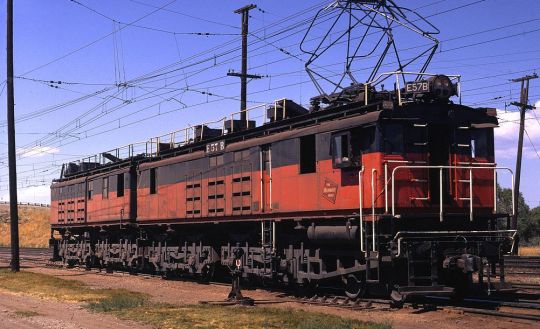
So the Milwaukee Road was the First Railroad to use the use 3000 Volt DC power for any significant stretches of Electrification in 1915 (it was adopted by South African Railways in 1925, Cleveland Union Terminal (under the New York Central Railroad), the Soviet Union in 1930, the Delaware Lackawanna and Western Railroad in 1930, Italy in 1933, Brazil in 1935, Spain and Chile in 1945)
however the Primary mainline Electrification system United States would be 11,000 Volts 25 Hertz AC which was Adopted by the New York New Haven and Hartford Railroad in 1907 between Pelham and Stamford in New York (later all the way between Manhattan and New Haven CT), the Pennsylvania in 1915 between Philadelphia and Paoli (later the Entire PRR mainline between Washington DC and New York as well the entire Philadelphia Suburban Network), the Great Northern railroad in 1922 between Wenatchee and Skykomish (de-electrified in 1956), the Virginian Railroad in 1925 between Mullens and Roanoke (de-electrified in 1962), the Reading Railroad in 1928 for their Half of the Philadelphia Suburban Network, and very Briefly the Norfolk and Western had Electrified the Elkhorn grade with this system but de-electrified in 1940
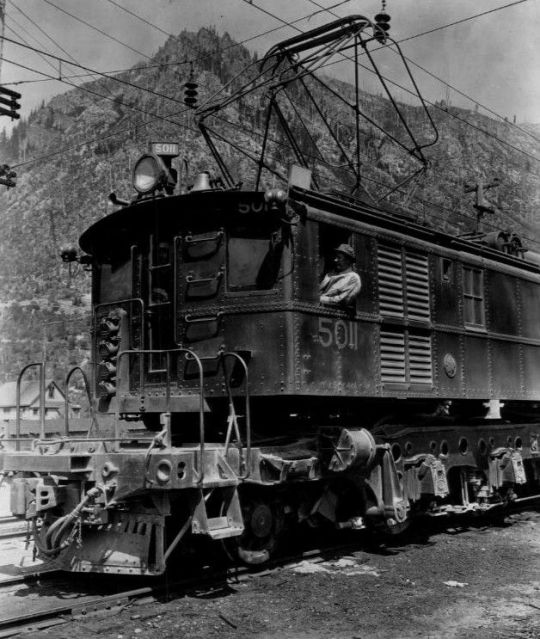
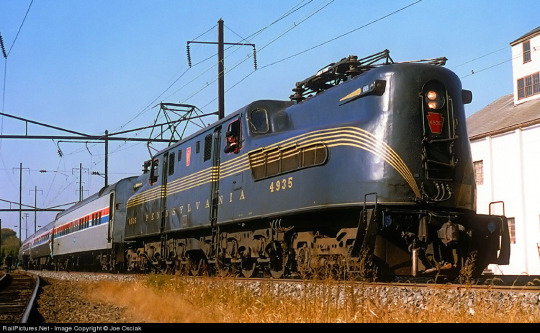
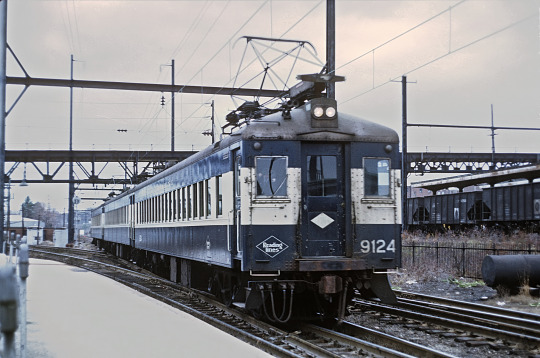
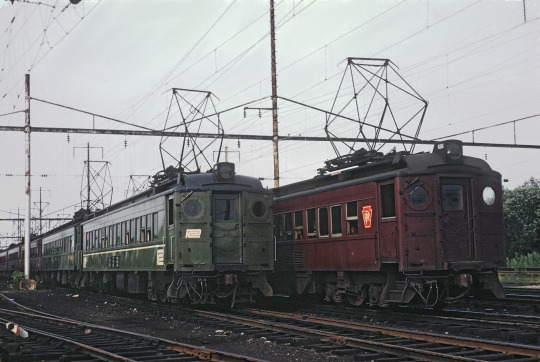
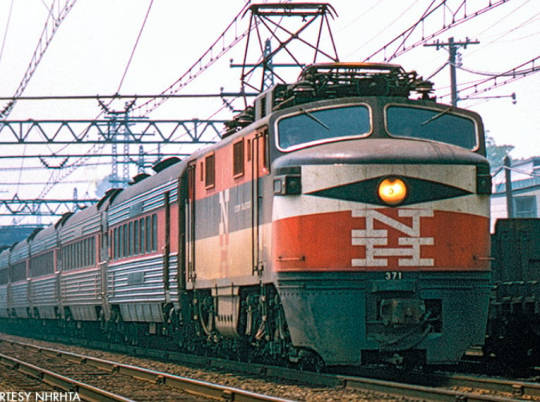
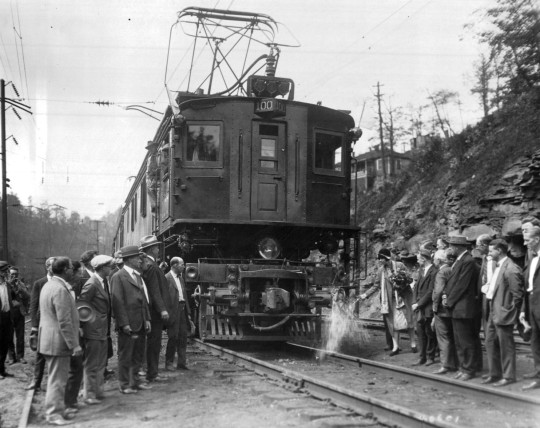

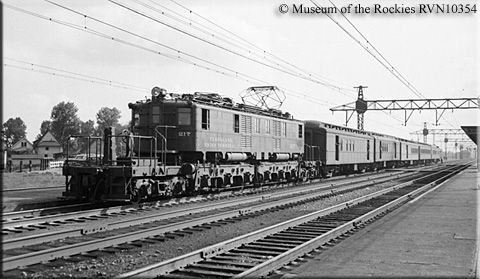
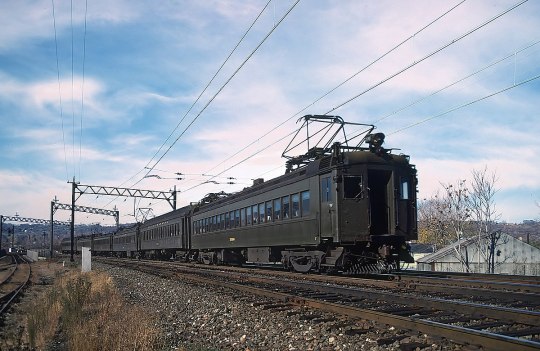
@amtrak-official
#trainposting#amtrak#electric traction#pennsylvania railroad#new york central#new york new haven and Hartford Railroad#new haven#penn Central#conrail#reading railroad#reading and Northern#Virginian Railroad#electrification#electrified railroads#great northern#septa regional rail#philadelphia#northeast corridor#Delaware Lackawanna and Western#Erie Lackawanna#Cleveland Union Terminal
17 notes
·
View notes
Text
WHAT I WANT BACK ARE THE STREETCARS LUXURY SLEEPER TRAINS, ELECTRIC RAILROADS AND TROLLEY BUSES!!!! GIVE THEM BACK!!!! BRING BACK THE STREAMLINERS










Y'know, the funny thing about all this "RETVRN TO THE 1950S" shit is that it's all "THIS IS WHAT THEY TOOK FROM YOU" when nothing in the pictures was actually taken away.
You can dress like a '50s guy and style your hair with Brylcreem if you really want. There's no law against that. You can raise a family in suburbia and cook hotdogs in the backyard. In fact, you've been able to do that for so long that it's kinda ruined the country by blighting the land with terrible housing developments and infrastructure. It would be hard to argue that any other lifestyle in the US has been more catered to and facilitated than the suburban nuclear family.
#trainposting#amtrak#electric traction#trolleyposting#pennsylvania railroad#milwaukee road#electrification#public transit#chicago el#north shore#interurban railroad#southern pacific#Cleveland Union Terminal#reading railroad#illinois central#electrified railroads#1950s#steam locomotive
5K notes
·
View notes
Text
Edgar Allen Poe lived in a whole string of cities that would eventually become part of the Northeast Corridor (Boston, NYC, Philadelphia, Baltimore) so Electra could totally be a goth! (the giant near-abandoned stations in that region around the 70s-80s are also VERY gothic in general)
#Stex#starlight express#lol i have a seperate gothy electric character based on the Cleveland Union Terminal#because that one had a whole underground labyrinth and big scary black electric engines that took trains in and out
11 notes
·
View notes
Text

Summer 1950: Heart of downtown Cleveland, Ohio, and Union Terminal Group (Terminal Tower and Hotel Cleveland). Gelatin silver print by Carl McDow.
30 notes
·
View notes
Text

Penn Central former New York Central P2 class electric locomotive is seen leading a commuter passenger train on the New York Central viaduct leading to Grand Central Terminal in New York City, 1969
Penn Central former New York Central P2 class electric locomotive is seen leading a commuter passenger train on the New York Central viaduct leading to Grand Central Terminal in New York City, 1969. Originally this locomotive was a 3000 volt DC pantograph equipped motor that operated in the Cleveland Union Terminal electric district. The New York Central rebuilt this locomotive for third rail operation for New York City area operation. This locomotive was the original engine with this wheel configuration of 2-C+C-2, and the New Haven Railroad based their EP-3 and EP-4 class electric locomotives on its wheel base plan, but with a higher horsepower output level. This wheel arrangement in the end resulted in the New Haven EF-3 class motor and the Pennsylvania Railroad GG-1. Bob Hughes was riding on-board a former New Haven Railroad FL-9 locomotive while traveling in the opposite direction when he captured this image.
#commuter train#pc#penn central#nyc#new york central#nynh&h#new haven railroad#1969#new york city#trains#passenger train#history#manhattan#new york
21 notes
·
View notes
Text
Why Did Cincinnati Abandon Cricket To Become America’s First Baseball Powerhouse?
You can blame the Civil War for Cincinnati becoming the home of professional baseball. Well into the 1860s, this was a cricket town with “town ball” and “base ball” taking a distant second place to bowlers and wickets.
The curious researcher can still find references to Cincinnati’s early cricketeers today, but most often as footnotes to the history of baseball. However, it is not too much of a stretch to say that baseball would not have prevailed in Cincinnati without the boost it received from the old-time cricket clubs.
Cincinnati’s cricket clubs were formidable opponents, hosting international matches with Canadian teams and participating in home-and-away rivalries with cricket clubs in Chicago, Cleveland and Pittsburgh. Cincinnati cricketeers were professionals long before the nascent Red Stockings decided to pay their players.
Cricket was most definitely an Englishman’s game and Cincinnati before the Civil War was largely a city of English origins. The Cincinnati Gazette [6 October 1853] summed up the popularity of the “manly old game”:
“Cricket matches are now quite in fashion. We see notice of them in numerous exchanges, East, North and West. Wherever Englishmen are found, there a Cricket Club is found with them.”

Although Cincinnati newspapers carried stories about out-of-town cricket matches as early as the 1820s, local cricketeers didn’t get organized until the 1840s. The Queen City Cricket Club convened in 1843 every Thursday at 2:00 p.m. at “Wade’s Woods” northwest of the intersection of Liberty Street and Central Avenue. By 1845, the Western Cricket Club offered some stiff competition to the Queen City club and the two teams battled it out on grounds located “at the foot of Eighth Street” in the Millcreek bottoms near the Whitewater Canal. It appears that the players were solidly middle-class – salesmen, plumbers, carpenters and shopkeepers – the sorts of folks who could spare a weekly afternoon to indulge in outdoor recreation.
By 1850 the Union Cricket Club, apparently a merger of the Queen City and Western clubs, was the dominant local team. Cricket grounds were hard to come by and the Union Club played variously at the Orphan Asylum lot where Music Hall now stands, on a wood-ringed field off Madison Road in East Walnut Hills, near the canal in Camp Washington and at the back of what later became known as Lincoln Park, location of Union Terminal today. From time to time, reports indicate that adherents of “town ball” or “base ball” also made use of the Union Cricket grounds, but only on days when the cricketeers were otherwise occupied.
Among the Cincinnati cricket stalwarts back in the day was Jonathan Hattersley, born in Sheffield, England, in 1835. Hattersley emigrated to the United States as a young man, arriving in New Orleans and working his way up the rivers to Cincinnati. After a failed start as manager of a weaving operation, he set himself up as the sales agent for a number of British steel refineries. He later joined the firm of Thomas Turner, manufacturer of cutting and slicing equipment. Hattersley married the owner’s daughter, bought out his father-in-law, and set up a saw manufactory with his son, Harry. Before the Cincinnati Fire Department went professional in 1853, Hattersley battled blazes with the Franklins, one of the amateur companies active in the city. He was among the founders of the Western Cricket Club and later became president of the mighty Union Cricket Club. His office in the saw blade factory on Third Street served essentially as the club’s headquarters.
The Union Cricket Club dominated Cincinnati cricket from the 1840s into the 1870s. Its bench was so deep that the club supported two teams – the stars and a farm team both under one roof. While the “first eleven” participated in matches from Chicago to the East Coast, the “second eleven” kept the hometown fans occupied by playing clubs from Northern Kentucky, Lawrenceburg and some smaller Ohio towns. The Union Club even challenged a championship English club then touring the states but couldn’t reconcile schedules. About half the Union Cricket Club players were paid professionals.
It was Jonathan Hattersley who recruited George and Harry Wright to Cincinnati from New York’s stellar St. George Cricket Club. Although the Wright brothers carried the original Cincinnati Red Stockings to baseball glory, they arrived in the Queen City as professional cricket players. Harry Wright was also from Sheffield, born the same year as Jonathan Hattersley. One may assume they had met in childhood. In an interview with the Enquirer [20 August 1875], Harry, by then manager of the Boston Red Stockings, recounted his arrival in Cincinnati:
“I was under contract, and was offered very fine inducements to leave New York. When I arrived in Cincinnati cricket was all the rage, but it finally subsided, and from the club I managed the old Red Stockings of that city was organized. I would like to say in this connection that the uniform I used as the cricketer was adopted by the Base-Ball Club.”
Wright glosses over what specific factors caused the “rage” for cricket to “subside,” but baseball scholars generally point to the Civil War, which brought young men from all over the United States together and gave them a great deal of free time when they weren’t busy shooting each other. Simon Worrall, writing in Smithsonian Magazine [October 2006] describes the wartime conditions that promoted baseball over cricket:
“A year before the Civil War broke out, “Beadle's Dime Base-Ball Player,” published in New York City, sold 50,000 copies in the United States. Soldiers from both sides of the conflict carried it, and both North and South embraced the new game. It was faster than cricket, easier to learn and required little in the way of equipment: just a bat (simpler to make than a cricket bat, which requires sophisticated joinery), a ball and four gunnysacks thrown on a patch of ground, and you're ready to play.”
By the time the war ended, Cincinnati seethed with baseball fever. Even Jonathan Hatterley’s son, Harry, took up baseball, catching for the junior-league Pickwicks in Cincinnati. A group of young executives – many of them Civil War veterans – organized the Cincinnati Base Ball Club on 23 July 1866 and quickly allied with the Union Cricket Club, who already had very nice facilities ready for play. According to Harry Ellard’s 1907 “Baseball in Cincinnati”:
“In 1867 the club moved to the grounds of the Union Cricket Club, with which was made a quasi alliance. These grounds were situated at the foot of Richmond Street. They were used in the summer for cricket and baseball and in winter were flooded and used for skating purposes, where great enthusiasm was manifested in this winter sport, with a series of interesting carnivals.”
Harry Wright and his brother George were convinced to give up cricket to lead America’s first professional baseball team. The rest, as they say, is history. Still, Harry, George and the rest of their team did not totally abandon cricket. It is not often reported that the Cincinnati Red Stockings, during their undefeated inaugural season, actually played a cricket match. In San Francisco, on 28 September 1869, the Cincinnati baseball team engaged the “All California Eleven.” According to Ellard:
“For the sake of variety and amusement they played a game of cricket with the California eleven, in which they showed that they could play cricket as well as baseball.”
The former cricketeers now known as the Cincinnati Red Stockings prevailed 118 to 79.

8 notes
·
View notes
Text
:3










BTW all of these trains are from the 1920s or 30s
lets player i watch sometimes uploaded a video of a survival game where you build a train base and i have always been utterly enthralled with the concept of mobile structures and in particular i have long fantasized about a sandbox game where your base is a train on a track that just keeps going but the game in the video completely squanders this concept by making it a linear story focused survival game with ultra sci-fi rectangle hover trains on an ice planet with a halo ring and like who fucking cares dude we get it you want to be subnautica but on ground soooo fucking bad.
what fun is a locomotive if it isn’t simultaneously a quaint, antiquated little gizmo and a roaring steel monster. give me a heavily stylized game set in a world that’s like early 20th century america in tech but there’s no like full industrial society just stations at little wild west esque towns and maybe the occasional city with like 1 (One) Steel Foundry. i wanna endlessly ride through scenic vistas on tracks that nobody built and people just decided to start following. i wanna do like regular train stuff and make deliveries between stations and carry passengers but i also want to be able and encouraged to build a stupid fuckoff huge train that goes back an arbitrary number of cars and functions as its own mobile town where you can recruit little guys at stations to come live on your train and you have cars for like processing materials or something. give me a game with the energy of driving your custom, kind of shitty train across that stupid bridge in stormworks to get to the arctic but also with something to do along the way, that’s the dream.
idk im kinda eepy but this game skirted so close to a game i have been frothing at the mouth for forever and then made the complete dealbreaker of being sci-fi, i can’t code for shit and have completely failed every time i tried to learn but i kind of want to make a design doc for my train game now even though this is the exact kind of huge scale dream game idea where you just straight up cannot make anything close to it without making like 30 boring stupid games over the course of 17 years first
#trainposting#amtrak#electric traction#steam locomotive#union station#southern railway#southern serves the south#northern pacific#great northern#illinois central#new york central#cleveland#Cleveland Union Terminal
9 notes
·
View notes
Text
The Field Building, Chicago
by Roger Jones
June 19, 2024

Two views of the Field Building, c. 1930
The field building, 135 S. LaSalle St., Chicago, was built 1928 - 1934, and designed by Graham, Anderson, Probst & White. Built by the estate of department store founder Marshall Field, it was the last major office building completed prior to a two-decade construction hiatus caused by the Great Depression and World War II. Its site formerly was occupied by the Home Insurance Building (1884), designed by William Le Baron Jenney.
Built at a cost of $12 million, the building featured 43 floors, and height of 163.1 m / 535 ft, and a surface of 111 484 m² / 1 200 000 ft. upon completion. It had entrances on both Lasalle and Clark Streets. The Field Building has also been known as the LaSalle National Bank Building, or Bank of America Building.
The building also featured 42 high-speed elevators, advanced technology at the time. Other innovations included polished aluminum window frames, radiant heat, dual elevators sharing one shaft, and pure drinking water delivered to drinking fountains in each office. The first and second floors were connected by escalators.
The building was designated a Chicago Landmark on February 9, 1994.

135 S. LaSalle, Solomon Cordwell Buenz
A distinctive moderne structure, the building's stripped-down design features smooth surfaces, limited ornament, and clean lines.
Straight vertical lines give the building a look as new as 1959. The main exterior material is limestone. The [lower] entrances made extensive use of white bronze and black granite, also with a complete lack of extraneous detail. As far as materials and craftsmanship are concerned, another Field building may never be built, architects say. The cost would be prohibitive. Three kinds of marble were used in the vast lobby arcade and corridors - white, from Vermont; a green variety, from Italy; and a delicately toned tan marble, also from Italy. The Field building took the entire output of the quarry producing the tan marble. It is irreplaceable, said Palmer. All the marble was cut and laid so that the patterns match from one slab to another. Source: Fuller, Ernest, "Famous Chicago Buildings," Chicago Tribune, January 3, 1959

Home Insurance Building, 1885 (demolished 1931), William Le Baron Jenney, architect

Plaque in the Field Building lobby

Postcard view






Photos from the Ryerson and Burnham Libraries, Art Institute of Chicago




Photos from the Hedrich-Blessing Archive, Chicago History Museum

View of lobby, showing "bookend" tan marble above elevator doors

Field Building ground floor plan.
My photographs:






Graham, Anderson, Probst & White
The Chicago firm of Graham, Anderson, Probst & White was founded in 1912 originally as Graham, Burnham & Co., as the successor to the D.H. Burnham Company. In 1917, the Burnhams left the firm, and Graham and the others, (William) Pierce Anderson, Edward Mathias Probst, and Howard Judson White formed the subsequent firm.
The firm got the majority of the big commissions from 1912 to 1936, including iconic buildings such as the Wrigley Building, Merchandise Mart, Field Museum, Shedd Aquarium, Civic Opera House, and the old main U. S. Post Office. They also designed built the Terminal Tower in Cleveland and Federal Reserve Bank in Kansas City.
It was the largest architectural firm under one roof during the first half of the twentieth century, its closest rival being the firm of Holabird and Root.
Architectural historian Carl Condit commented on the Field Building: "Graham, Anderson, Probst, and White turned their backs once and for all on the past and produced a Sullivanesque skyscraper stripped down to essentials, a dense array of uniform vertical limestone bands, topped by a horizontal spandrel that simply marks the outer face of the parapet at the roof."





Major works by the firm in Chicago: the Wrigley Building, Merchandise Mart, Civic Opera House, Union Station, and Field Museum

Sources:
Online:
Chicagology: Field Building
Chicago Landmarks
Lasalle Reimagined
Chicago History Museum images
YouTube: Why Chicago razed the first skyscraper / The Field Building
Architecture and planning of Graham, Anderson, Probst, and White, 1912-1936 : transforming tradition, by Chappell, Sally Anderson. Chicago : University of Chicago Press, 1992. Available on Internet Archive
Journals:
Field Building, Chicago Ill. Architectural record. 1932 Apr., v. 71, p. 277. Ill
The sky's the limit: high-rise history in Chicago. Inland Architect. 1990 Jan.-Feb., v.34, no.1, p.60-[63]. Photos
The Field building, Chicago's newest skyscraper. Architectural Record. 1934 Aug., v. 76, p. 120-128. ill, plans
6 notes
·
View notes
Text
Bad Religion and Dropkick Murphys Announce Tour
Bad Religion and Dropkick Murphys are heading out on tour. 07/22 – Spokane, WA @ BECU Live at Northern Quest * 07/23 – Bend, OR @ Hayden Homes Amphitheater * 07/24 – Tacoma, WA @ Dune Peninsula at Point Defiance Park * 07/26 – Reno, NV @ Grand Theatre at Grand Sierra Resort * 07/29 – Oakland, CA @ Fox Theater * 07/30 – Sacramento, CA @ The Backyard * 08/01 – Pocatello, ID @ Portneuf Health Trust Amphitheatre * 08/02 – Salt Lake City, UT @ The Union * 08/04 – Kansas City, MO @ Grinders * 08/05 – Indianapolis, IN @ Everwise Amphitheater at White River State Park * 08/06 – Buffalo, NY @ Outer Harbor Live at Terminal B * 08/10 – Cleveland, OH @ Jacobs Pavilion * 08/13 – Asbury Park, NJ @ Stone Pony Summer Stage * 08/15 – Atlantic City, NJ @ Ovation Hall at Ocean Casino * 08/16 – Gilford, NH @ BankNH Pavilion * 08/17 – Big Flats, NY @ Mich Ultra SummerStage at Tags * * = w/ The Mainliners --- Please consider becoming a member so we can keep bringing you stories like this one. ◎ https://chorus.fm/news/bad-religion-and-dropkick-murphys-announce-tour/
0 notes
Text
Culminan las filmaciones de Superman: Legacy en Cleveland, con emocionantes locaciones de rodaje en la ciudad

Superman: Legacy, la tan esperada película que da inicio al universo cinematográfico de DC Studios, ha llegado a su fin en su fase de rodaje en Cleveland, Ohio. La producción de la película ha estado capturando algunas de las locaciones más icónicas de la ciudad, y el equipo detrás de la película ha completado con éxito varias semanas de filmación.
Las grabaciones tuvieron lugar en lugares clave como Ontario Street, la Cleveland Greyhound Station, Public Square, el Detroit-Superior Bridge, PNC Plaza, Progressive Field y el Cleveland Arcade, cada uno de los cuales ha dado vida a diversas escenas que seguramente emocionarán a los fanáticos. Un hito memorable del rodaje fue la filmación de exteriores del Huntington Bank Building y la Key Tower, que dieron lugar a impresionantes tomas de la ciudad, que servirán como fondo para algunas de las escenas más épicas de la película.
Además, el Monumento a los soldados y marineros en Public Square también tuvo su lugar en la pantalla, mostrando el compromiso de la producción de capturar la esencia de la ciudad en su representación de Metrópolis. Un aspecto destacado de la filmación fue la utilización del exterior del Leader Building, que se transformó en la sede del Daily Planet, y de la Key Tower, que sirvió como la sede de Stagg Enterprises, la poderosa empresa de Maxwell Lord.
El equipo de filmación de Superman: Legacy también preparó un ambicioso traslado a Cincinnati el 18 de julio, donde se grabarán escenas adicionales en el Cincinnati Museum Center en la Union Terminal, una de las estaciones más emblemáticas de la ciudad, así como en una parte del Lytle Tunnel. La producción planea culminar esta etapa de filmación el 30 de julio.
Este es solo el principio de la creación del universo cinematográfico de DC Studios, y los fanáticos están ansiosos por ver cómo todas estas tomas, junto con las actuaciones de Henry Cavill como Superman, Zooey Deschanel como Lois Lane y James McAvoy como Lex Luthor, se materializan en la pantalla grande. Superman: Legacy promete ser una de las películas más grandes y esperadas de la próxima década.
1 note
·
View note
Text



Cleveland Union Terminal Group (Tower City Center)
230 West Huron Road
Cleveland, OH
Cleveland Union Terminal Group, now known as Tower City Center, is a large mixed-use facility in Downtown Cleveland, Ohio, on its Public Square. The facility is composed of a number of interconnected office buildings, including Terminal Tower, the Skylight Park mixed-use shopping center, Jack Cleveland Casino, Hotel Cleveland, Chase Financial Plaza, and Tower City station, the main hub of Cleveland's four RTA Rapid Transit lines. The structure was built in 1929 as Cleveland Union Terminal.
The building complex was originally commissioned by the Van Sweringen brothers, prominent local railroad moguls and real estate developers. The center of the complex was Cleveland Union Terminal (CUT), a terminal for all trains coming into Cleveland via the various railroad lines in a concept similar to Grand Central Terminal in New York City. The complex was designed by the firm of Graham, Anderson, Probst and White. Site preparation began in 1922, and approximately 2,200 buildings were demolished. Construction began in 1926, and structural work was completed by 1927. At the time, it was the second-largest excavation project in the world after the Panama Canal. The Terminal Tower opened to its first tenants in 1928. From its completion until 1964, the Terminal Tower was the tallest building in North America outside of New York City.
Three other office buildings, the Medical Arts Building, Builders Exchange Building, and Midland Building, were built in addition to the Terminal Tower. The three Art Deco buildings are collectively known as the Landmark Office Towers Complex and were completed in 1929. In addition to the new buildings, the 1918 Hotel Cleveland was connected to the complex. The facility included a number of retail stores and restaurants. Original designs for the complex show that at first the brothers did not plan on building an office tower within the complex. However, they eventually decided to build the 52-story Terminal Tower on the northeast side of the complex facing Public Square. Cleveland Union Terminal was dedicated and officially opened in 1930.
In 1931, the Higbee Company moved its main store to a new building connected to Cleveland Union Terminal. In 1934, the U.S. Postal Service moved its main Cleveland office to Union Terminal in a new building designed by the firm of Walker and Weeks. It was known as M.K. Ferguson Plaza under the ownership of Forest City Enterprises. The Union Terminal served most rail lines: the Baltimore and Ohio Railroad, New York Central Railroad and Nickel Plate Road. Exceptions were the Pennsylvania Railroad and initially the Erie Railroad. On March 17, 1976, the complex was added to the National Register of Historic Places. In 1991, two new 11-story office towers, the Skylight Office Tower and the Chase Financial Plaza, were added. The Chase Building houses Cleveland's Ritz-Carlton Hotel and The Skylight Office Tower housed the former Hard Rock Cafe. In 2001, Time Warner Cable Amphitheater opened as an outdoor stage along the Cuyahoga River near the Tower City Complex.
0 notes
Text
”this is a deeply bizarre mystical practice” *describes stories that could be rewritten about an electric train afterlife and all the weirdness makes total sense*
I usually reject a concrete afterlife vs reincarnation for machines since the latter is more accurate and progressive but “sneaking past biblically accurate electric train angels in Grander Central Terminal even deeper underground” is too fun of a mental image to not do some kind of one-off thing about.
#finally a setting where i can anachronicistically stick all the early US electric engines#and underground palaces are literally where some worked irl it’s called Grand Central Station and Cleveland Union Terminal
0 notes
Text
youtube
Los Angeles, CA -- Jessica Pratt will be releasing her new album Here In The Pitch on May 3 via Mexican Summer. Earlier this week, she released the second single titled "World On A String," along with a music video directed by Kate Bollinger. The soft track spans just about 3 minutes long and its vintage pop sheen will have you in a sun-filled daze. From Pratt's lower register to the glittery hooks, "World On A String" is filled with possibilities and a child-like wonder for life. There's a hypnotic lull to the track that'll have you in mesmerized sway.
“On this track I was influenced by the swaying, naive brilliance of 'lost' teenage garage rock bands, as well as enduring loves like The Nazz and Guided By Voices,” Pratt says. "Record the song moments after you've learned it on an instrument you've just picked up. Oftentimes, that's all you need.”
Jessica Pratt Tour Dates: Fri. May 31 - Barcelona, ES @ Primavera Sound Sun. June 2 - Paris, FR @ L’Alhambra * Mon. June 3 - Brussels, BE @ AB Theater * Tue. June 4 – Amsterdam, NL @ Zonnehuis * Thu. June 6 – London, UK @ Union Chapel * [SOLD OUT] Fri. June 7 – London, UK @ Earth Theatre ~ Tue. June 18 - San Diego, CA @ Lou Lous % Thu. June 20 - Los Angeles, CA @ Teragram Ballroom % [SOLD OUT] Fri. June 21 - Pioneertown, CA @ Pappy + Harriet’s (Outside) % Sat. June 22 - San Francisco, CA @ Bimbo’s 365 Club % [SOLD OUT] Tue. June 25 - Vancouver, BC @ Biltmore Cabaret % Wed. June 26 - Seattle, WA @ Neumos % Thu. June 27 - Portland, OR @ Wonder Ballroom % Sat. June 29 - Sonoma, CA @ Gundlach Bundschu % Thu. July 18 - Minneapolis, MN @ Fine Line ^ Fri. July 19 - Madison, WI @ Majestic Theatre ^ Sun. July 21 - Chicago, IL @ Pitchfork Music Festival Mon. July 22 - Cleveland, OH @ The Roxy ^ Wed. July 24 - New York, NY @ Bowery Ballroom ^ [SOLD OUT] Thu. July 25 - New York, NY @ Bowery Ballroom # [SOLD OUT] Fri. July 26 - Philadelphia, PA @ World Cafe Live # Sat. July 27 - Cambridge, MA @ The Sinclair # Mon. July 29 - Washington, DC @ The Howard Theatre # Tue. July 30 - Saxapahaw, NC @ Haw River Ballroom # Fri. Aug. 2 - Nashville, TN @ Basement East # Sat. Aug. 3 - Atlanta, GA @ Terminal West # * = with Joanna Sternberg ~ = with Astrid Sonne % = with Tony Molina ^ = with June McDoom # = with @
Connect with Jessica Pratt:
Facebook | X | Instagram
0 notes
Text

Action at "North White" (North White Plains) in New York's Westchester County on June 20, 1968. Although the locomotives (a T-motor leading an ex-Cleveland Union Terminal P-motor) still wear New York Central paint and lettering, this is now the Penn Central.
The two electrics have come out of Grand Central Terminal in New York City to this location, where, usually at this time there was a motive power change, from electric to diesel, since the NYC's electrification on the Harlem Division ended a short distance to the north.
Now, at least for some off-peak runs on the "Upper Harlem" (Brewster and beyond), Budd RDCs have been substituted in place of locomotive-hauled consists north of here; they continue to be placed behind an electric, and additional coaches, between North White and Grand Central.
The electrics are hauling a few heavyweight coaches that are only going this far north, and are headed for the yard, while the RDCs are still at the Holland Avenue platform in the background, waiting for track time to resume the journey, now under their own power. That's NW tower at the right, handling the choreography for the moves necessary to accomplish this operation.
#commuter train#pc#penn central#nyc#new york central#1968#new york city#trains#passenger train#freight train#history#north white plains#new york
13 notes
·
View notes
Text

Cleveland Union Terminal
2 notes
·
View notes
Photo

90 years ago: Louis C. Rosenberg was commissioned to document the construction of the Cleveland Union Terminal. Here's #21 of his series, from November 1929. http://www.clevelandmemory.org/
3 notes
·
View notes